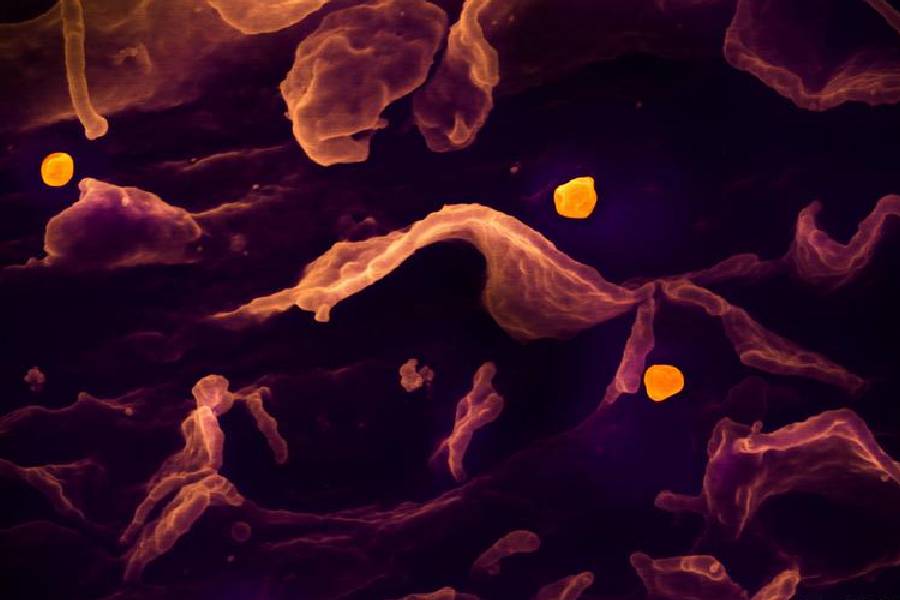After a 14-year-old boy died of Nipah virus Sunday, July 21, 2024, in the southern Indian state of Kerala, authorities tried to stop a new outbreak — just a year after the last outbreak in 2023.
Kerala State Health Minister, Veena George, said the boy died after suffering a cardiac arrest, which was apparently brought on by the virus. A further 60 people had been identified as being at high-risk, she said.
Nipah is most common in fruit bats, which live in wooded areas close to the highly populated state of Kerala. It's also found in pigs.
Humans can pick up an infection from animals either directly, through droplets, or indirectly via contaminated surfaces. Human-to-human transmission is also possible. An infection can trigger encephalitis and lead to mild to severe illness, but also death.
The World Health Organization classifies Nipah as a priority pathogen, which means it has the potential to trigger an epidemic.
How is the virus transmitted?
Nipah virus is commonly found in fruit bats (Pteropodidae), which feed on nectar and pollen, as opposed to vampire bats which eat insects and drink the blood of animals. Fruit bats are much bigger and use their eyes, and not ultrasound, to orient themselves.
Scientists still don't conclusively know how the virus is transmitted from fruit bats to pigs, cattle or even humans. However, there are indications that both humans and animals can get infected by coming in contact with the contaminated saliva and urine of fruit bats.
The 2018 outbreak in Kerala was probably due to the contamination of a drinking water source. Dead fruit bats were later found in a well belonging to the house of an infected family in Changaroth. First, many of the family members fell ill. Later, their acquaintances also got sick.
Why is the virus so dangerous?
The Nipah virus aggressively inflames the brain. The US Centers for Disease Control cites an incubation period of five days to two weeks.
Initial symptoms resemble those of the flu: fever, nausea and severe headache. Some patients experience respiratory problems. Later, disorientation, dizziness and confusion follow.
Within one to two days, patients can slip into a coma and die. The mortality rate for Nipah disease is 70%.
How can the disease be treated?
There is no vaccination or medication against the Nipah virus — neither for animals, nor for humans. Medications have so far only been able to alleviate the symptoms.
In principle, patients have to be immediately isolated and taken to an intensive care unit, where vital body functions can be supported.
Contact persons or suspected cases have to be quarantined to stop the spread of the infectious disease.
Where does the Nipah virus come from?
Nipah virus was first discovered in 1998 in the Malaysian village of Sungai Nipah. Febrile encephalitis — an illness caused by the virus entering the brain — and, in some cases, severe respiratory infections were observed in 229 individuals.
Men who worked in slaughterhouses were the first to catch the infection. It became apparent that one could contract the disease from animals.
Around the same time, a comparatively mild outbreak of a respiratory infection caused by an unknown pathogen was observed in pigs in Malaysia.
Only later did scientists find that the workers and the pigs had been infected by the same virus. As a precaution, more than 1 million pigs — half the country's total pig population — were culled in Malaysia.
Since then, cases of the virus have been reported in Bangladesh in 2001 and 2003, and in Kerala in 2018, 2021 and 2023.











